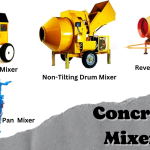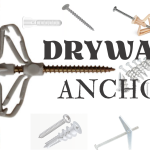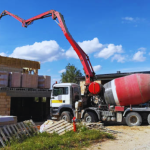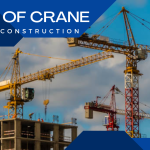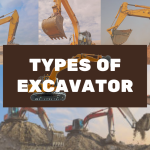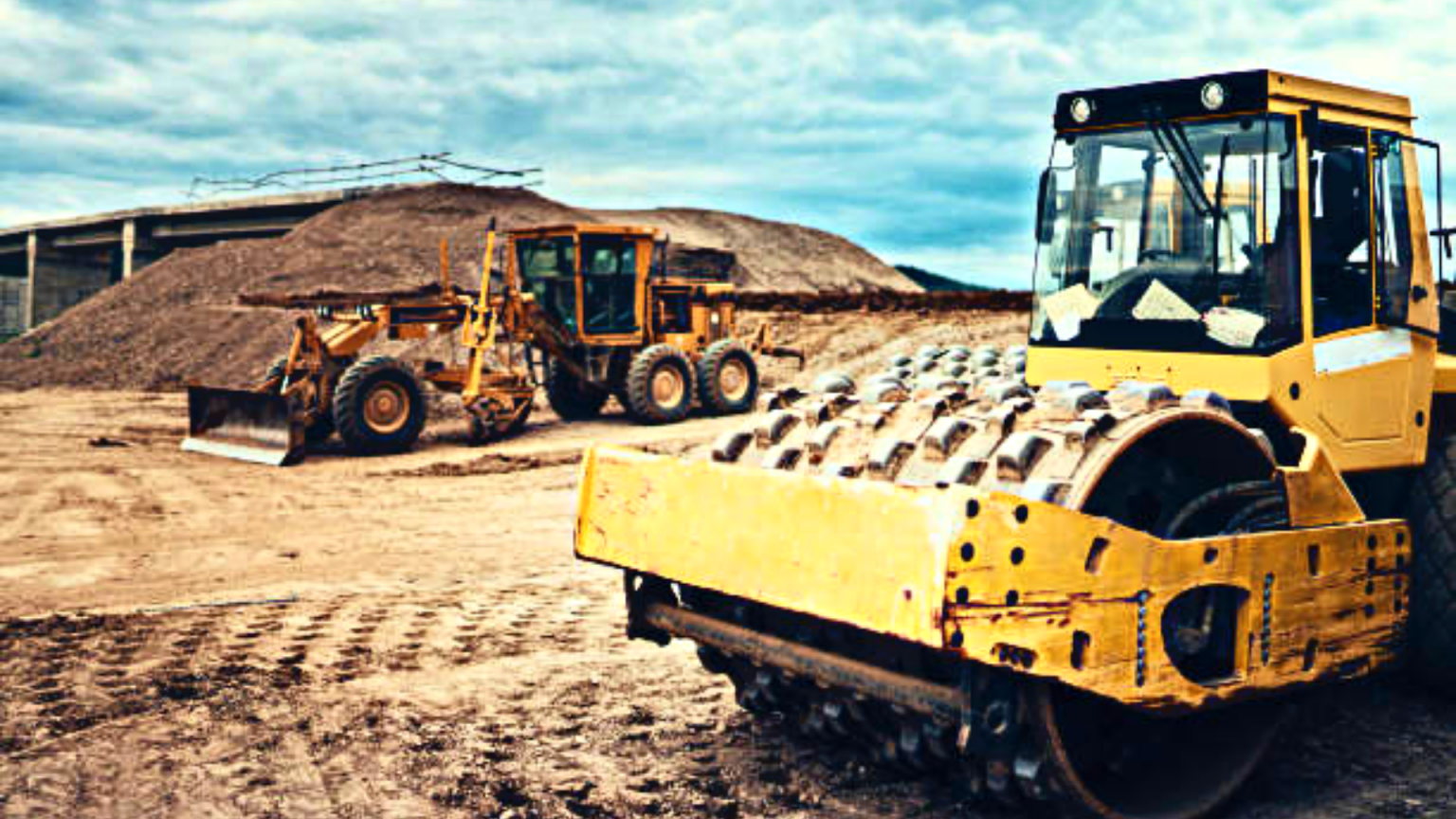
There are several types of rollers and other soil compaction equipment available. Depending on the soil type and moisture conditions, this compacting equipment may be used.
Compaction
Compaction is a mechanical or manual procedure used to improve or increase soil density. On the construction site, it is used to strengthen the soil layer’s bearing capacity and stability.
Compaction equipment is frequently obtained by utilizing a vibrating or non-vibrating steel drum roller, a grid or cleated roller, or a sheep-foot roller, or a pneumatic roller. All are best suited to a certain use.
For general application, a huge steel drum vibratory roller is frequently regarded as the finest. The materials that can generally be compressed inexpensively with each type of roller are indicated below. The best way to compact cohesive soils is to raise the soil’s density by impact and weight. The impact is necessary to break down the cohesive bond, allowing the soil to become denser.
The most effective method of compacting granular soil is vibration. Static compactors merely apply weight and tend to compress from the bottom of the layer up; vibratory compactors employ mechanical action to consolidate soil particles; and impact compactors compact material with a high-amplitude strike. It is possible to protect earthworks from rainfall using a pneumatic roller.
The purposes of several types of soil compaction equipment.
Compaction helps to decrease settling, permeability, seepage, and other issues. During compaction, air is expelled from the vacuum areas in the soil mass, increasing the density. Compaction typically enhances shear strength, bearing capacity, and stability against structure failure. The following is a list of several reasons for compaction.
- To decrease subsequent settling when subjected to working loads.
- To improve the soil’s shear strength.
- Increasing the void ratio, which makes water flow through soil more difficult.
- To prevent the buildup of high water pressures that cause soil to liquefy during earthquakes.
Types of Soil Compaction Equipment
Based on their mass, soil compaction equipment may be divided into two categories.
- Light soil compaction equipment
- Heavy soil compaction equipment
Light Soil Compaction Equipment
This equipment is very useful for compacting small areas that require minimal compaction effort (force). Light compaction equipment includes the following items:
- Rammers
- vibratory tampers
- vibratory plate compactors
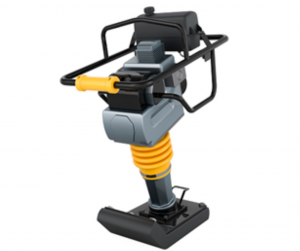
Rammers
Rammers are handheld, machine-driven tools used to compress soil in limited spaces by impacting the ground. Rammers are lighter than other tools so that one person can handle them.
The rammers’ bases are typically smaller, measuring between 15 x 15 cm2 and 20 x 20 cm2. Their typical weights fall between 30 kg and 10 tons.
These rammers, which may weigh up to 2 or 3 tons and freely fall from heights of one or two meters, are used to compact rock. They can fall from these heights and crush the rock directly under them.
Clay soils that are cohesive and are found in confined spaces, such as trenches and building foundations, are particularly well suited for compacting using rammers.
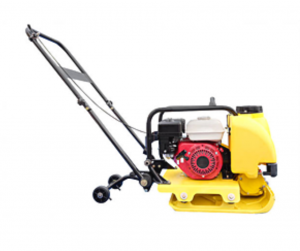
Vibratory Tampers
B y using a different mechanism driven by a motor, the base plate fitted on vibratory tampers is spring activated. In addition, vibratory tampers are excellent for use in restricted spaces with little space. With the help of the vibrations, they may also be used to compress various kinds of soil.
They typically weigh between 50 and 100 kg and are manually guided like rammers.
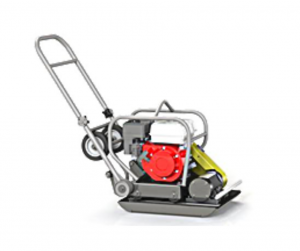
Vibratory Plate Compactors
Vibratory plate compactors are typically used on coarse soils like sand that contain four to eight percent fine particles like clay.
Vibratory plate compactors work differently from rammers in that they vibrate the soil instead of making an impact to compact it.
This equipment can weigh anywhere from 100 kg to 2 tons. The plate areas, which range from 0.16 to 1.6 square meters, are also larger than rammer areas.
Heavy Soil Compaction Equipment
This equipment is used in particular for compacting larger spaces with various soil types that may require little or a lot of compaction effort (force).
The kind of soil and amount of soil moisture are taken into consideration while choosing heavy compaction equipment.
The following items are classified as heavy compaction equipment:
- Grid rolls
- Impact roller
- Pneumatic tired rollers
- Sheep foot rollers
- Smooth wheels rollers
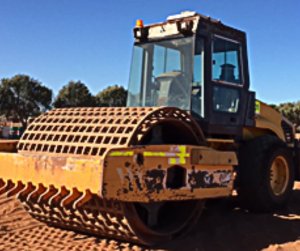
Grid Rollers
The rolls on the grid rollers are typically formed of a mesh of 20 mm diameter bars separated by 100 to 150 mm in both directions. They might also be smooth drums with a grid of square holes drilled into the surface.
They are most effective for scoria-type fillings (random mixtures of large and small particles, usually angular and fairly soft). They are particularly useful for breaking large stones and pushing them underneath dense surfaces.
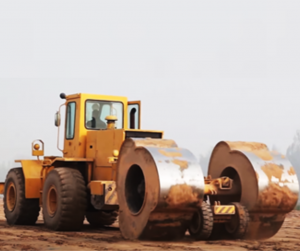
Impact Roller
A tractor pulls a prism-shaped mass constructed of steel or concrete with impact rollers. A prism-shaped mass rotates, creating an impact that transfers enough energy to accomplish medium compaction to a depth of several meters.
Gravels and rock fills are examples of granular soils that may be rolled with this kind of roller.
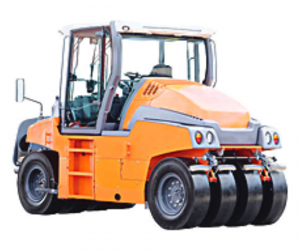
Pneumatic Tired Rollers
Pneumatic tire rollers are made out of a platform that is mounted on two axles. When compared to the front axle, the rear axle contains one additional wheel. The width of the rollers is approximately equivalent to the combined width of all the inflated tires.
They are rarely applied to soil. Instead, its ideal application may be found in areas where the rolling surface is neither abrasive nor steep, like road asphalt.
The pneumatic tire roller is the best tool for compacting soils with little or no cohesiveness. These soils range from gravel to sands, clayey sands, sandy clay sands, even silty sands. Since their pressure is exerted over comparatively larger areas, the soil is prevented from collapsing.
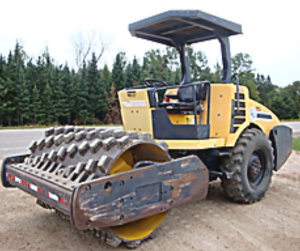
Sheep-foot Rollers
Fine-grained soils like silty clays and heavy clays are compacted with the use of this sort of roller. They are typically employed to compact soil during the building of dams, embankments, pavements, and railroads.
Compaction tools with sheeps foot rollers come in static and vibratory varieties. Vibratory rollers are used to compress fine-grained soils and soil containing sand-gravel mixtures. This type of roller is commonly used in road and rail construction projects to compress the subgrade layers.
It is composed of steel drums on which the projecting lugs are mounted and has a capacity of 14 kg/sq. cm. or a lot of pressure. Broad bases with a spindle form, prismatic, and clubfoot varieties are among the several leg shapes.
When the roller lugs walk out gradually and are consistently covered, sheep foot roller compaction equipment efficiency may be attained. The amount of pressure applied to the foot and the amount of ground covered every few steps both affect efficiency.
For the needed pressure and ground coverage, parameters such as the roller’s gross weight, the area of each leg, the number of lugs in contact with the ground at any one moment, and the total number of feet per drum are taken into account. Penetrating feet and pressure on the soil are the major causes of soil compaction. When one leg is perpendicular, there is the most pressure.
Ground coverage is affected by foot pressure and received per pass. The gross weight of the roller, the area of each leg, the total number of feet per drum, the number of lugs in contact with the substrate at any given time, and other factors are taken into account when determining the necessary pressure and coverage of the ground. The major causes of soil compaction are pressing feet and pressure on the ground. When one leg is perpendicular, the pressure is at its maximum.
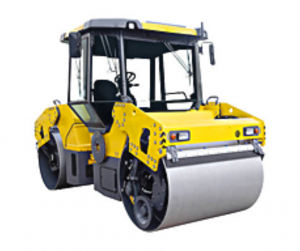
Smooth-Wheeled Rollers
It is used to compact crushed rock, sand, gravel, and other granular materials. They are not suitable for silts or clays in general, although they can be utilized for compaction of these materials.
The performance of smooth-wheeled roller compaction equipment is determined by the roller’s mass, width, and diameter. When utilizing these rollers on wet roads with cross-fall, safety concerns must be considered.
Characteristics of Different Types of Soil Compaction Equipment
Compaction is used to densify soils during the building of embankments and subgrades. Higher density of embankments and subgrades is accomplished by compacting the soil with rollers; consequently, proper compaction equipment selection is required. Manufacturers all around the world are changing their compactors to accommodate new customer improvements. Each manufacturer has a unique selling point. However, they have highlighted some common features of soil compaction below.
- Soil compactors aid in preparing the soil for road building.
- The enormous weight of the soil compactor reorients and compacts the soil particles.
- Suitable for lengthy working hours in demanding applications.
- Compactors can be configured to work with a variety of soils and aggregates in applications such as roads, utilities, water retention structures, and major residential, commercial, and industrial site preparation.
- Compactors have exceptional climbing power, high centrifugal forces, and good vision, resulting in increased productivity and power.
- A good compaction machine is simple to use and has a long service life.
- Soil compactors are simple to use, easy to maintain, and comfortable for the user.
- Compactors can be attached to excavators and backhoes. It compacts all types of materials.
- Soil compactors are low-maintenance machines.
- Compactors are used by a variety of retail and service industries, including fast food restaurants and motels, to reduce the volume of non-recyclable garbage and to control nuisances such as rodents and odor.
- Tolerance for such annoyances is especially low in the hotel business. These compactors are generally electric or hydraulic in operation, with a variety of loading settings.
- There are also manual or hydraulic garbage compactors made for residential use. Additionally, they reduce the amount of trash.
- In addition to garbage trucks and landfills, there are solar-powered trash compactors that can hold the equivalent of 200 gallons of garbage before needing to be emptied.
- The soil compactor may be modified for use in smaller construction or landscaping areas.
- These construction tools include readily adjustable monitoring systems that employ sensors to measure soil stiffness and compaction progress.

